The deepening growth of Banana Gun in the bear market proves the practicality and demand for the product.
Written by: GABE TRAMBLE
Translated by: TechFlow
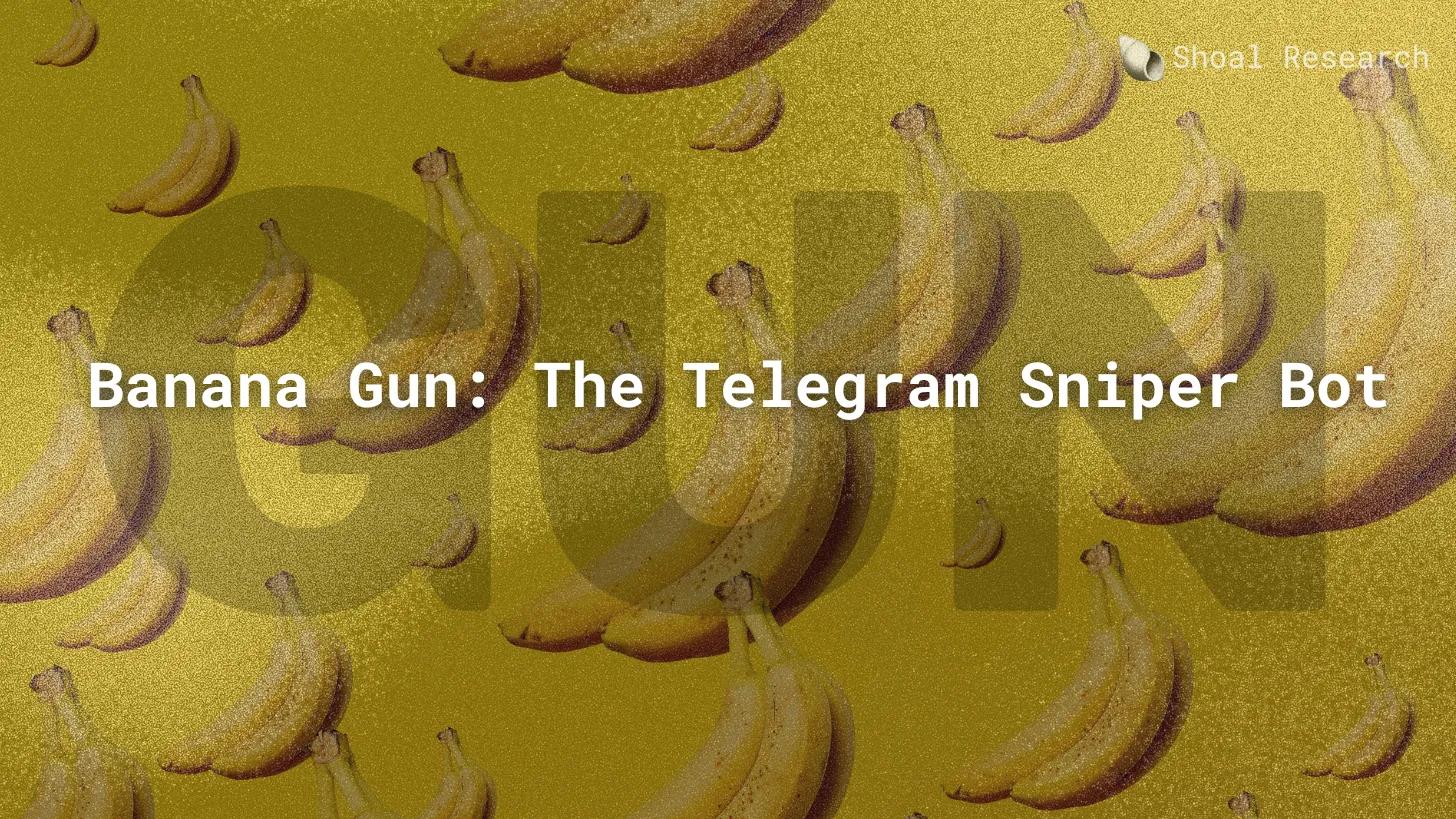
Emulating is a good summary of the speculative atmosphere in the crypto field Gamblefi, where traders are driven by daily hundredfold returns, Rug, and liquidity extraction. In this field, meme coins have a unique appeal, especially when traders follow the market and promote these tokens on Twitter. Platforms like Banana Gun have emerged to provide users with the essential tools for high-speed trading.
A few years ago, Maestro led the way in this field, initially gaining attention under its original name Catchy. Maestro is an essential platform for traders seeking short-term market volatility profits. Then came Unibot, which improved this field by reducing focus on sniping and focusing more on ordinary users troubled by the unfriendly interface of Uniswap. They strategically focused on referral fees to drive rapid growth, a strategy similar to what we see on platforms like Rollbit and Stake.
Recently, Banana entered this field, offering a product competing with Maestro in sniper functionality and with a fee advantage. Banana seems destined to win the hearts of "Degen" traders, who are willing to take extreme risks for potentially huge returns.
This fluid landscape highlights the continuous development of platforms and strategies in the underground world of crypto Gamblefi, each striving to meet the evolving needs and risk preferences of its user base.
In the bear market and with the historically low DEX trading volume since 2020, hundreds of ERC-20 tokens are deployed every day. For some traders, observing the meme coin market is a full-time job. A project rising 100 times can break even and yield decent profits. Traders can participate in various ways, including presales, sniping, and spot purchases of tokens.
- Presale: Allocating funds before token issuance.
- Sniping: Using bots to automatically purchase tokens at issuance.
- Spot: Directly purchasing tokens on exchanges like Uniswap or Coinbase.
Traders tend to determine their strengths and focus their energy on several categories. In this process, we will mainly focus on the sniping phase; let's delve into it.
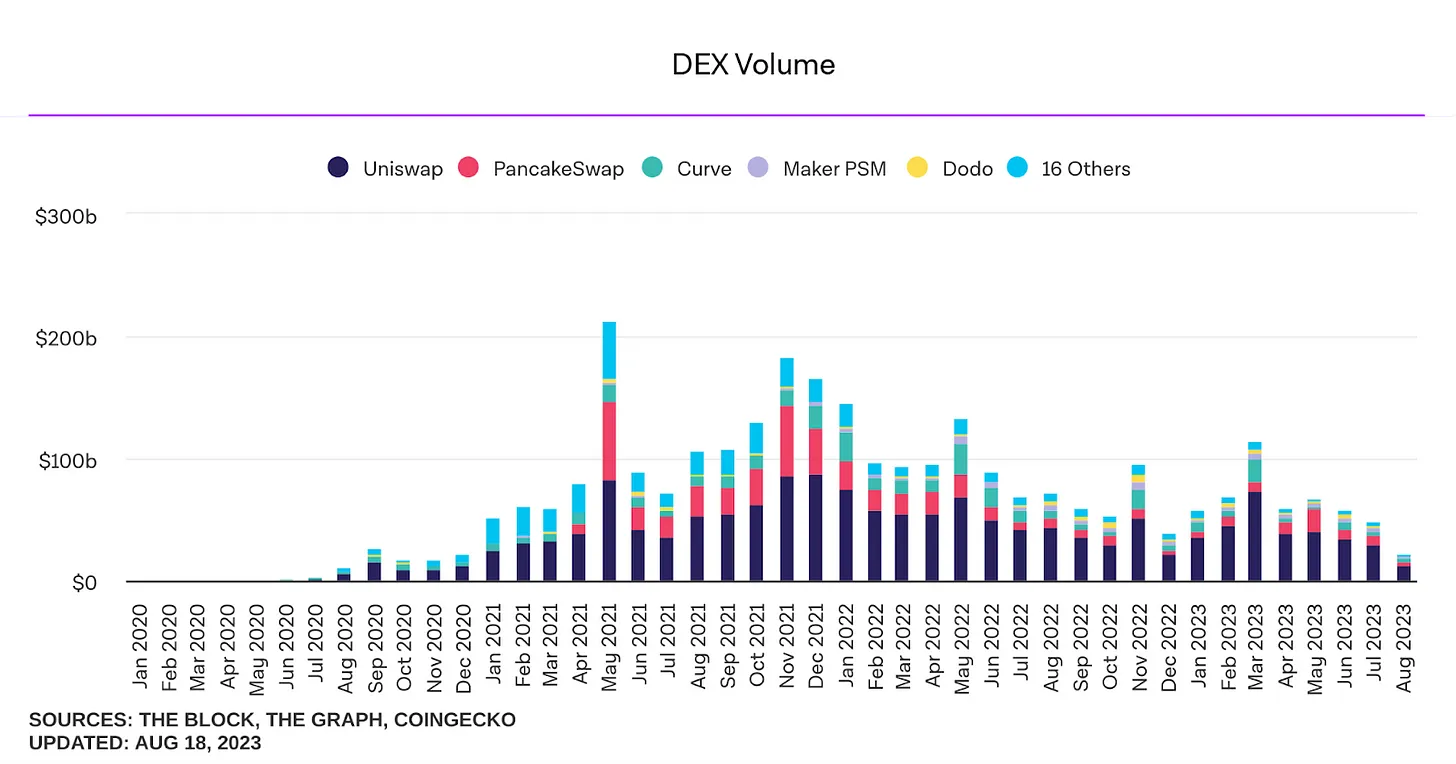
Token Snipers
Before the emergence of Telegram sniping bots, this game relied entirely on expertise. Top token snipers and bot operators would carefully analyze meme coin contracts to identify key functions triggering token releases, maximum trading volume, and any measures implemented by developers to prevent early buyers. With the emergence of Telegram bots like Banana Gun and Maestro, this approach has largely been replaced.
In short, token snipers are automated trading bots that allow users to execute rapid buy and sell orders for tokens newly issued on decentralized exchanges like Uniswap. Many of these bots use Telegram as a platform. Developers favor Telegram because it is a thriving place for trading ideas and a native encrypted messaging app. The product-market fit for token snipers is clear as users adopt them at an increasingly rapid pace. Sniping bots can also buy already issued tokens at a similar speed and efficiency, accounting for a large portion of their trading volume.
These top sniping bots can now simulate the entire contract functionality, allowing users to bypass the user interface of platforms like Uniswap, simply deciding how much ETH to deploy. This shift makes the sniping landscape more user-friendly but also more competitive.
For example, in the case of Maestro, users still need to input the maximum trading volume and require some understanding of contract methods in non-advanced mode. This is where Banana stands out from other competitors - it does not require such expertise, and the process is even simpler and clearer.
In contrast to platforms like Uniswap, which recently removed expert mode, this change may benefit retail traders by adding a security layer for high-impact trades, but it forces experienced traders to manually adjust their strategies. The removal of expert mode has impacted experienced traders, who have built their own front ends to improve the experience. This highlights why Telegram sniping bots designed for a more mature user base, like Banana Gun, are gaining attention in the fiercely competitive ERC-20 token trading landscape. By using these bots, traders not only optimize their strategies but also avoid the limitations imposed by decentralized exchange interfaces targeting retail users.
How do these sniping bots work?
Imagine a trader watching the release of $TOKEN a few days later. They just need to load the Telegram app and put the smart contract into the token sniping bot. After specifying the amount of ETH they are willing to risk, it's just a waiting game. Once the token enters the DEX pool, the Telegram sniping bot triggers and executes predefined trading parameters. If everything goes according to plan, the trader enters at a market value of 10k (assuming the example) and skyrockets to a market value of 200k in a few seconds - a whopping 20x profit. But it's not that simple now. The effectiveness of these sniping bots has led to a surge of traders using the same strategy, often using 10 or more wallets to outcompete opponents.
This is why having just one sniping bot is no longer enough; timing is crucial. Enter Banana Gun. Unlike other platforms that require manual input or specific monitoring, Banana Gun optimizes the entire process. Once the contract is added to the bot before token trading begins, Banana's snipers will automatically look for smart contract triggers like "EnableTrading" to snipe/buy once the token is released.

The snipers can also monitor "liquidity addition" trades, now that liquidity is available for trading.

Banana Gun
Banana Gun has democratized the sniping landscape in the crypto space. Previously, sniping was an exclusive activity reserved for individuals with advanced technical skills who could read and configure smart contracts. Banana Gun has opened this door to everyone by automating most of the sniping process. Their platform is designed to be very user-friendly: you paste a contract, and the bot handles complex tasks such as determining method IDs, tax rates, and maximum trading volume. This feature sets them apart from competitors like Maestro, where users need to manually read contract addresses and configure settings.
The cornerstone of Banana Gun's unique value proposition lies in its focus on decentralization through automation and preventing most rug scams. Banana Gun not only achieves automation, but every trade is privately executed with the Ethereum bribe set by the user. This clever mechanism provides an additional layer of security. In an environment where someone attempts to execute a rug with expensive gas fees, Banana Gun allows you to snipe at a reasonable cost. The private trade feature also ensures that you will never get sandwiched or front-run. Sandwich attacks are a way for traders (bots) to exploit trade ordering by placing trades before and after a user's trade. In fact, Banana Gun goes further by canceling your trade if it detects the risk of being sandwiched, even if it is privately executed. Even competitors like Maestro lack this level of nuanced functionality.
Speed is crucial, and Banana Gun is currently one of the fastest retail sniping bots in the market. It launched in early June and has attracted approximately 700 daily active users, with a total user base exceeding 12,000.

When users make a purchase, the interface moves to the selling channel, where users can focus on the selling mechanism. Typically, other sniping bots buy and sell in a single interface.
Core Features
0 Block Bribe
Bribery is a key feature of Banana Gun, but it's worth noting that Maestro initially pioneered the concept of collective bribery. Maestro's system makes it extremely difficult for individual bot users or snipers to defeat a group of participants' collective bribery, effectively democratizing the process.
However, Banana Gun has advanced this approach from a fresh perspective. While Maestro may have introduced collective bribery, Banana Gun has perfected it by attracting a smaller but more seasoned and experienced user base. These individuals are well-versed in the sniping mechanism and know how to defeat even a collective group.
Banana Gun uses a custom RPC, a dedicated node that communicates directly with the blockchain, allowing faster data transmission than standard providers like Infura or Alchemy. In this high-speed environment, pending trades from Banana Gun's elite snipers are bundled into a trade package. This package is then forwarded to the block producer, the Ethereum network validation node responsible for grouping transactions.
When the package enters the block producer, the competition intensifies. Banana Gun's snipers engage in blind bribery, where each participant provides a hidden bribe, also known as a "tip," to ensure faster transaction confirmation. For example, user A purchases X tokens at a price of 0.20 ETH and includes a bribe of 0.10 ETH. This bribe directly incentivizes the block producer to confirm user A's transaction faster. If the token involves transaction taxes, user A may initially incur a loss until the token appreciates.
The blindness of these bribes adds a layer of strategy and unpredictability to the trading process. Since you cannot see others' bribes, and they cannot see yours, your experience and shrewdness become your greatest assets. This explains why Banana Gun consistently maintains a lead in the race to secure the 0 block, despite its smaller community. The combination of fast custom RPC, bundled trades, and blind bribery gives Banana Gun a unique competitive advantage, making it a powerhouse in the token sniping field. This unique trio streamlines the trading process, creating an environment that blends skill, strategy, and speed, setting Banana Gun apart from its competitors.
Maximum Spending
Banana Gun has made crucial updates to address one of its initial shortcomings: users' inability to control sniping limits. In the early stages, the bot would automatically purchase any amount set by the user. However, this made some traders vulnerable to sandwich attacks.
To address this issue, Banana Gun added slippage control and limit orders to its trade package. Now, users can define a "maximum spending" limit in ETH, which restricts the token and gas amount they are willing to spend. This is particularly beneficial when dealing with tokens with a maximum trading volume, meaning the token contract code limits the maximum quantity that can be purchased in a single trade. For example, if a user's spending limit is "0.25 ETH," the bot will keep the total expenditure (including gas) below this limit. If the maximum allowed trading volume is reached, any remaining ETH will be refunded to the user.
A significant new feature added based on user feedback ensures that if a trade cannot meet the maximum allowed purchase quantity, it will be automatically canceled. This safeguard is crucial in preventing situations where users receive a small amount of tokens but pay high fees due to others' higher bribes. This update adds a layer of risk mitigation, making the sniping game more strategic.
These improvements make the competitive environment fairer, allowing Banana Gun users to navigate with more confidence in a more ruthless and cooperative trading scenario.
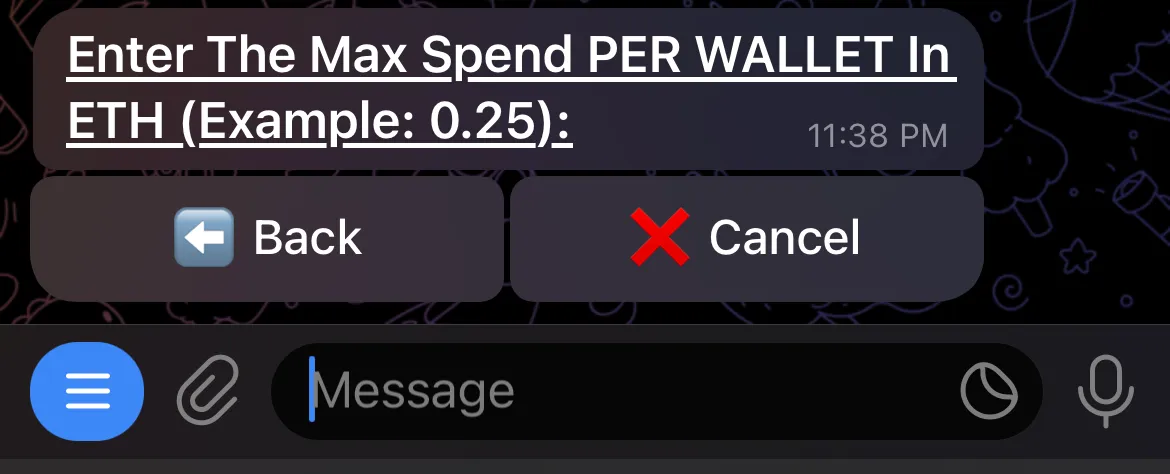
Trading Revenue
Traders use the product, but you might still wonder if developing trading infrastructure like Banana Gun is worth anyone's time. Ultimately, Banana Gun generates 10-25+ ETH in revenue daily through trading fees. This is without token revenue (as of September 15), whereas for Unibot, token revenue adds additional trading fees to its trading volume.
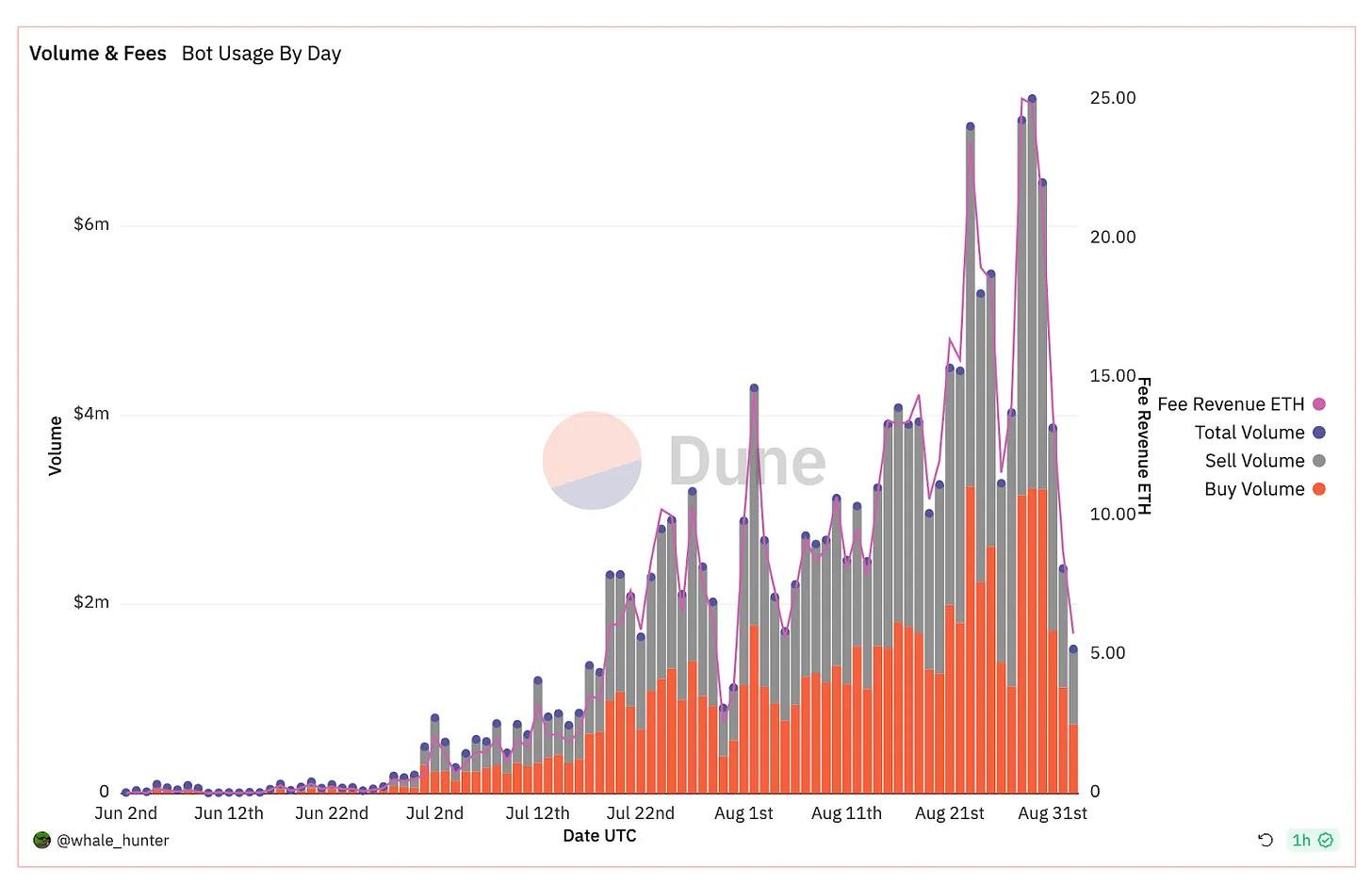
Competitive Landscape
Several bots compete with Banana Gun in the sniping space, including Maestro and Unibot, which are the largest snipers. Overall, Maestro has the largest user base. From daily bot usage, Banana Gun has recently surpassed Maestro in a few days.

Market Structure
Currently, the total bot user base exceeds 100,000, with daily active users consistently exceeding 4,000 since August. Several leading products account for over 90% of the user base - specifically Maestro, Banana Gun, and Unibot.
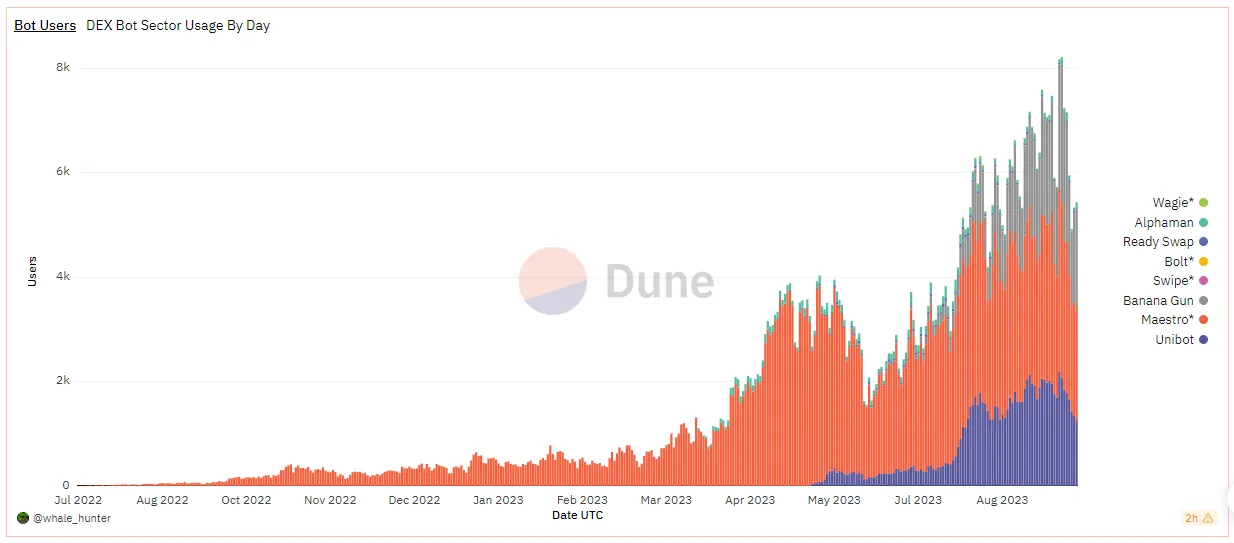
Revenue and Fee Structure
As of September 15, 2023, Banana Gun reported a trading fee income of 756 ETH, exceeding $1.2 million. Banana Gun adopts a low-fee model, charging only 0.5% for total buys and sells, which is attractive to its smaller but more seasoned user base.
Understanding the fee structure is crucial to understanding why Banana Gun's average daily fee income is lower despite its trading speed and strategic advantages. In comparison, Maestro charges a 1% fee for total buys and sells, and even offers a premium membership for $200 per month to access additional features. Another competitor, Unibot, has a completely different model - its revenue comes from taxes as part of its fee structure.
The word "total" is crucial here. If you make a 10 ETH trade and break even (buy 10 ETH/sell 10 ETH), you still need to pay fees based on the total trading volume. With Maestro, you would pay 0.1 ETH on the buy and another 0.1 ETH on the sell, totaling 0.2 ETH. In the case of Banana Gun, you would pay 0.005 ETH on the buy and 0.005 ETH on the sell, totaling only 0.01 ETH. The significant difference in fee structure partly explains Banana Gun's lower daily trading fee income, but also represents a competitive advantage for cost-conscious users.
By breaking down the fee differences, it can be seen that despite having fewer daily active users, Banana Gun provides an attractive alternative for experienced traders seeking to maximize strategies while minimizing costs.

Outlook: Intent-Based Exchanges
We predict that Telegram bot tools will trend towards "intent-based trading," essentially acting as automatic executors of specific trading intentions for users - whether it's swapping x, executing y, or z.
Intent is the signature for executing trades based on defined criteria, rather than individual transactions (TXN) or paths leading to the same result. By using intent, users can have more flexible control over the outcomes of their trades.
"If a trade says 'execute A then execute B, pay C to get X return,' an intent is saying 'I want X, and I'm willing to pay up to C in fees.'"
- Paradigm
While BananaGun typically may not be considered an intent-based exchange as it does not route exchanges to third parties for execution, we may see tools like Banana Gun auctions or tools that fulfill exchange orders on behalf of users, or use a request-for-quote (RFQ) model allowing users to submit an order for offline fulfillment. Currently, Banana Gun can interact with block producers to expedite trade processing and enable sniping. In the future, snipers may shift towards off-chain solutions to fulfill early snipes or general exchanges. In theory, users could sign a transaction confirming their willingness to spend X, and then Banana Gun would execute that transaction on behalf of the user, or send it to a premium participant for additional fees.
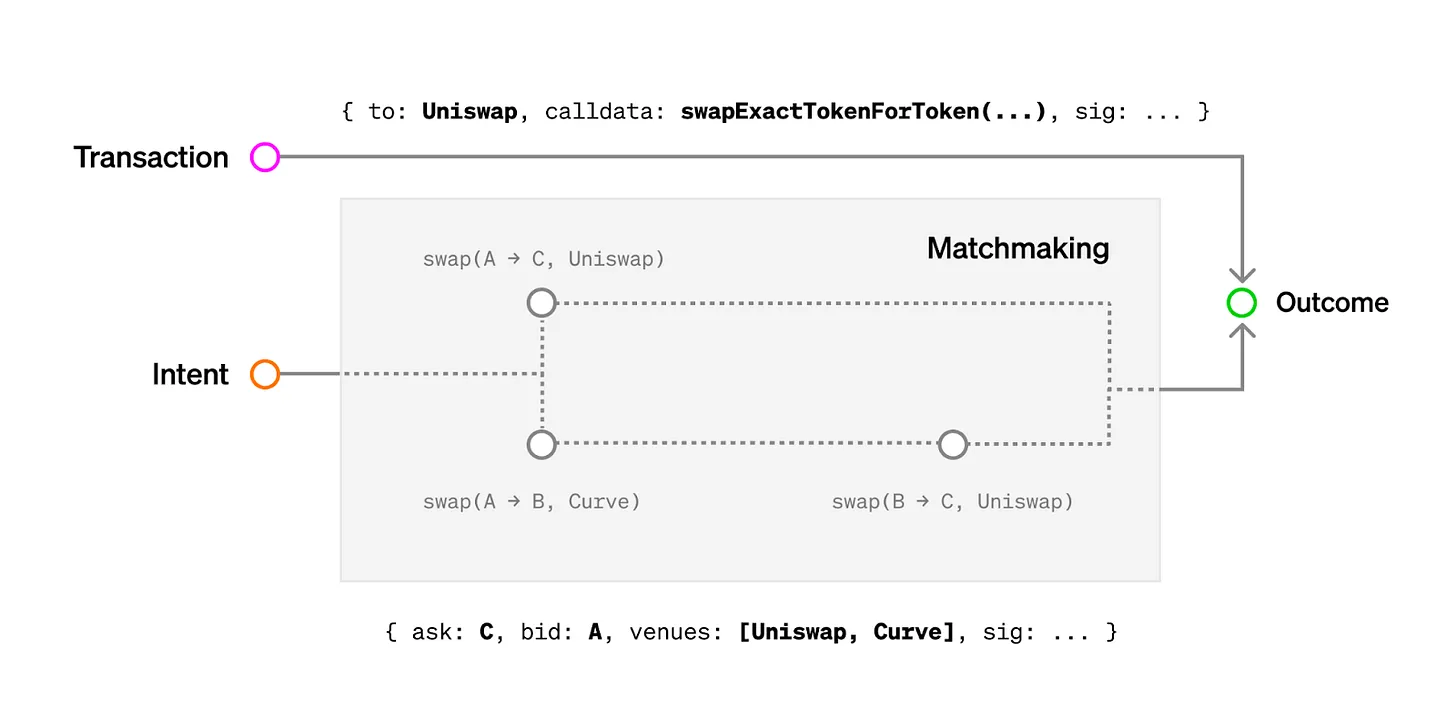
Risks
Like most protocols, Banana Gun is not without risks. Risks are typically similar to those in DeFi protocols, including economic exploits or smart contract risks. Economic exploitation involves exploiting the monetary system within the protocol, while smart contract exploitation may exist in unaudited code. Both of these risks may be present in sniping bots.
Security Risks
When it comes to Banana Gun, security risks are not limited to smart contract vulnerabilities. The bot can access users' private keys, meaning the bot project team technically has control over users' funds. To mitigate this risk, most traders keep only enough funds in the Telegram wallet to execute trades and transfer the rest to a more secure wallet.
There is always a risk of accidental exposure of private key data. However, it is worth mentioning that both Banana Gun and Maestro immediately delete the private key from the Telegram user interface after the user provides the private key or generates it within the application. For Banana Gun, if you forget or lose your private key, the platform cannot retrieve it for you. Private keys are stored on separate encrypted servers, accessible only to the bot and protected by multiple layers of security, including encryption, hashing, and transformation. Encryption packages the data for secure storage, hashing transforms the data into a one-way, irreversible string, and transformation further obfuscates the data into an unreadable format, collectively ensuring the highest level of protection for private keys.
Bribery (Tips)
Being the fastest comes at a cost. Just like cheetahs can run very fast, the downside is that they need time to rest. With Banana Gun, users may overbribe tokens based on pure speculation and speculation, eroding profits. If "Sniper A" bribes 0.1 ETH, and competitor "Sniper B" bribes 0.2 ETH, the buy-in point for "Sniper A" will be higher. In some cases, unreasonable bribes are added, resulting in losses for many participants. Tips are non-refundable and are entirely sent to the block producer.
Conclusion
Banana Gun stands out for its speed, low cost, and strong stability, focusing primarily on execution timing, and many successful trades can be attributed to Banana Gun's efficiency and trade bundling architecture.
The continued growth of Banana Gun in the depths of the bear market demonstrates the practicality and demand for the product. Despite the complexity of sniping, Banana Gun's user base remains strong, with over 700 users daily in just a few months, and daily revenues exceeding 10 ETH in recent weeks.
However, the user base of token sniping bots is unforgiving and not loyal to brands, so the Banana Gun team must continue to iterate and ensure they have a competitive product.
免责声明:本文章仅代表作者个人观点,不代表本平台的立场和观点。本文章仅供信息分享,不构成对任何人的任何投资建议。用户与作者之间的任何争议,与本平台无关。如网页中刊载的文章或图片涉及侵权,请提供相关的权利证明和身份证明发送邮件到support@aicoin.com,本平台相关工作人员将会进行核查。




